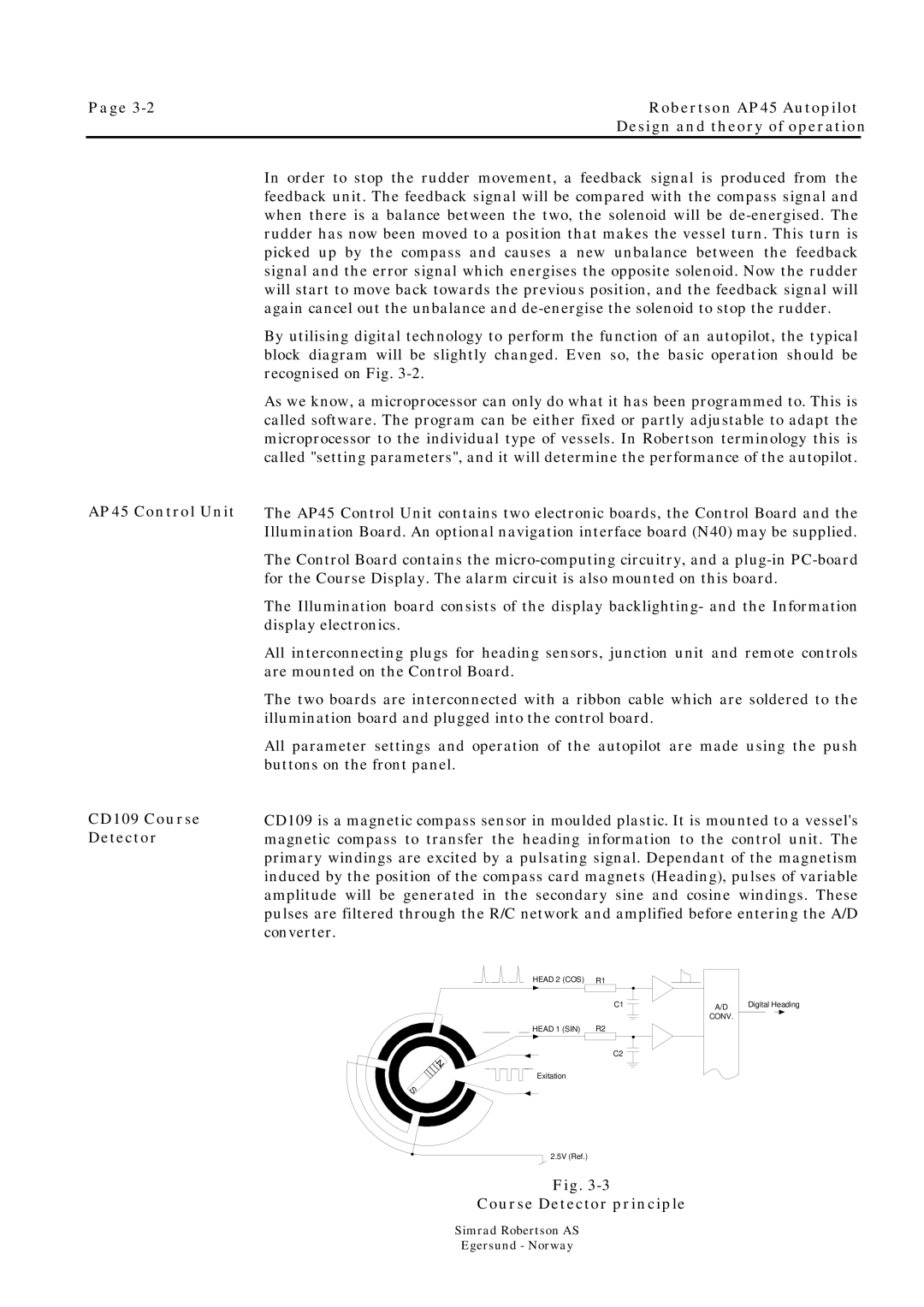
Page | Robertson AP45 Autopilot | |
| Design and theory of operation | |
|
|
|
AP45 Control Unit
CD109 Course Detector
In order to stop the rudder movement, a feedback signal is produced from the feedback unit. The feedback signal will be compared with the compass signal and when there is a balance between the two, the solenoid will be
By utilising digital technology to perform the function of an autopilot, the typical block diagram will be slightly changed. Even so, the basic operation should be recognised on Fig.
As we know, a microprocessor can only do what it has been programmed to. This is called software. The program can be either fixed or partly adjustable to adapt the microprocessor to the individual type of vessels. In Robertson terminology this is called "setting parameters", and it will determine the performance of the autopilot.
The AP45 Control Unit contains two electronic boards, the Control Board and the Illumination Board. An optional navigation interface board (N40) may be supplied.
The Control Board contains the
The Illumination board consists of the display backlighting- and the Information display electronics.
All interconnecting plugs for heading sensors, junction unit and remote controls are mounted on the Control Board.
The two boards are interconnected with a ribbon cable which are soldered to the illumination board and plugged into the control board.
All parameter settings and operation of the autopilot are made using the push buttons on the front panel.
CD109 is a magnetic compass sensor in moulded plastic. It is mounted to a vessel's magnetic compass to transfer the heading information to the control unit. The primary windings are excited by a pulsating signal. Dependant of the magnetism induced by the position of the compass card magnets (Heading), pulses of variable amplitude will be generated in the secondary sine and cosine windings. These pulses are filtered through the R/C network and amplified before entering the A/D converter.
HEAD 2 (COS) | R1 |
| C1 |
HEAD 1 (SIN) | R2 |
| C2 |
N |
|
Exitation
S
2.5V (Ref.)
Fig.
Course Detector principle
A/D | Digital Heading |
CONV.
Simrad Robertson AS
Egersund - Norway
